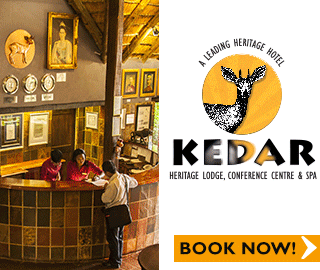

East Africa: The next hub for apparel sourcing?
BY ACHIM BERG, SASKIA HEDRISH, BILL RUSSO | 09 Aug 2017 00:48
East African countries—in particular, Ethiopia and Kenya—have the potential to become bigger players in garment manufacturing. But the road ahead won’t be easy. In the past two years, a number of European companies—among them, H&M, Primark, and Tesco—began sourcing some of their garments from Ethiopia. The rest of the apparel industry took notice: since 2013, there has been rising interest in not just Ethiopia but also other East African countries as potential sourcing destinations for apparel. Also contributing to the buzz is the renewal of the African Growth and Opportunity Act (AGOA), which gives certain countries in sub-Saharan Africa duty-free access to the US market.
What is the true potential of East Africa to grow into a major garment-sourcing hub? To find out, we visited factories in the region; interviewed stakeholders, including manufacturers and buyers; and analyzed market data. In addition, we conducted a survey of chief purchasing officers (CPOs), this time with a series of questions focused on East Africa.
Nearly three-quarters of survey respondents said, as they did in 2011 and 2013, that over the next five years they expect to reduce their purchases from Chinese firms. Chinese apparel production has indeed fallen since 2010—but China remains the undisputed giant of garment manufacturing, with approximately $177 billion in apparel exports in 2013.
The East Africa opportunity
According to United Nations projections, sub-Saharan Africa will have the highest growth in working-age population anywhere over the next 20 years. By 2035, the working-age population in the region is expected to be as large as China’s today—more than 900 million people. This massive labor pool is capturing the attention of several industries, including apparel.
Within sub-Saharan Africa, East African countries—especially Ethiopia and Kenya, and to a lesser extent Uganda and Tanzania—are of interest to apparel buyers. The governments of both Ethiopia and Kenya are taking steps to develop their domestic textile and garment industries.
Each of the two countries has strengths and weaknesses. Our research and interviews revealed, for example, that Ethiopia has cost advantages whereas Kenya boasts higher production efficiency. Challenges common to both countries include poor infrastructure, cumbersome customs processes, a dearth of technical and managerial talent, and low levels of social and environmental compliance.
Ethiopia
Apparel buyers today are sourcing basic, large-volume items from Ethiopia: T-shirts accounted for 46 percent of the country’s exports to the EU-15, and trousers 31 percent. As much as 60 percent of exports are sent to Germany and 10 percent to the United States. But Ethiopia accounts for a mere 0.01 percent of total apparel exports, according to the World Trade Organization.
Why, then, is Ethiopia such a hot topic for apparel buyers? Our interviewees and survey respondents said the biggest reason is cost: Ethiopia’s wages for garment workers are among the lowest globally; at below $60 per month, and work-permit costs for foreign workers are less than one-tenth those in neighboring Kenya. Additionally, Ethiopia has low electricity prices. The country has a strong supply of hydroelectric power, and while the power grid is not the most reliable, the Ethiopian government is building a separate grid for new industrial zones currently under development.
Ethiopia could someday become a source of raw materials: it has more than 3.2 million hectares of land with a suitable climate for cotton cultivation. Yet, barely 7 percent of that land is being used today. The combination of low land-utilization rates, planning errors, low crop yields, and quality problems means Ethiopia has had to import cotton. Social compliance has also been an issue. For example, organic-cotton cultivation recently suffered a setback after garment manufacturers supplying European firms became entangled in land-grabbing accusations in Ethiopia’s Omo Valley.
Another problem is production efficiency, which currently runs between 40 and 50 percent, and long lead times. Eighty percent of the CPOs in our survey cited production inefficiency as a challenge to the growth of apparel sourcing in Ethiopia.
Kenya
Like Ethiopia’s, Kenya’s apparel industry currently specializes in supplying high-volume bulk basics such as trousers, which account for 58 percent of its exports to the United States. The typical minimum order size is 10,000 pieces; the country’s larger players have minimum order sizes of 25,000 to 50,000 pieces.
Kenya has benefited greatly from AGOA—92 percent of its apparel exports in 2013 went to the United States, according to UN Comtrade. Suppliers we interviewed said the EU’s Economic Partnership Agreement isn’t as much of an incentive: the overall duty-free advantage is less than that of AGOA, and the competition with low-cost Asian countries is stiff, as they too are benefiting from preferential agreements with the European Union. Some Kenyan manufacturers said they aren’t eager to expand their business to Europe because they perceive European buyers as more demanding with respect to lead times, order sizes, and quality.

Within sub-Saharan Africa, East African countries—especially Ethiopia and Kenya, and to a lesser extent Uganda and Tanzania—are of interest to apparel buyers. The governments of both Ethiopia and Kenya are taking steps to develop their domestic textile and garment industries.
The capacity of Kenya’s garment factories has grown markedly in recent years, thanks to foreign direct investments from Asia and the Middle East, as well as support from the Export Processing Zones developed by the Kenyan government. Factories have grown larger and more efficient; they now have around 1,500 employees on average compared with around 560 in the year 2000.
However, as a result of the lack of a local upstream industry, manufacturers must import fabrics—which means considerably longer lead times. Fabrics from overseas can take up to 40 days to make their way through customs and to a garment factory. Manufacturers and buyers alike said that another challenge of doing business in Kenya is comparatively high labor costs, with monthly wages for garment workers in the $120 to $150 range. Energy costs are also high, and because the power supply is spotty, factories often have to rely on generators. In Africa, power from generators works out to be four times as expensive as power from the grid.
Like Ethiopia, Kenya will need to address compliance and risk issues if it is to attract more international buyers. According to the CPOs we surveyed, corruption, high crime rates, and poor social compliance is among the core challenges they face in Kenya.
Future scenarios for East Africa
As part of our analysis, we created, tested, and refined three scenarios for the evolution of East Africa—in particular, Ethiopia, Kenya, Tanzania, and Uganda—over the next decade. In 2013, these four countries’ apparel exports totaled $337 million.
The first scenario is that East Africa will remain a niche market. This scenario assumes that free-trade agreements with the United States and the European Union will continue. In part as a result of volatility in currencies and equity markets, the prospects for the region will remain rather modest.
In the second scenario, East Africa becomes a new sourcing option for several large players in the basics categories, and the region’s apparel exports more than double. In this scenario, East Africa’s garment companies move beyond cut, make, and trim facilities2and embark on the path to vertical integration—but this process could take several years. If East Africa is to experience sustainable growth in garment manufacturing, collaboration among all stakeholders is a must.
A third scenario assumes that major apparel companies from around the world begin to open sourcing offices in East Africa. The region attracts enough investment to upgrade facilities and recruit skilled workers, and its export volumes approach those of countries such as Mexico or Pakistan. But even in this scenario, it could take years for vertically integrated, indigenous players to appear in the region—and that might be achievable only if the countries cooperate to build regional value chains.
If East Africa is to experience sustainable growth in garment manufacturing, collaboration among all stakeholders is a must. Governments, for instance, might consider whether to invest in infrastructure, support local entrepreneurs, diversify free-trade agreements, and build market-oriented educational institutions. Suppliers will need to embrace performance improvements and management training, upgrade their facilities and offerings, and enter into long-term partnerships with buyers. All parties will need to make every effort to ensure social and environmental compliance. Buyers, for their part, would do well to support the capability-building efforts of East African suppliers and begin to evaluate the region as a true strategic option rather than just a testing ground.
----------------
This article is adapted from Sourcing in a volatile world: The East Africa opportunity, an April 2015 report from the Apparel, Fashion & Luxury Group in McKinsey’s Retail Practice.
















